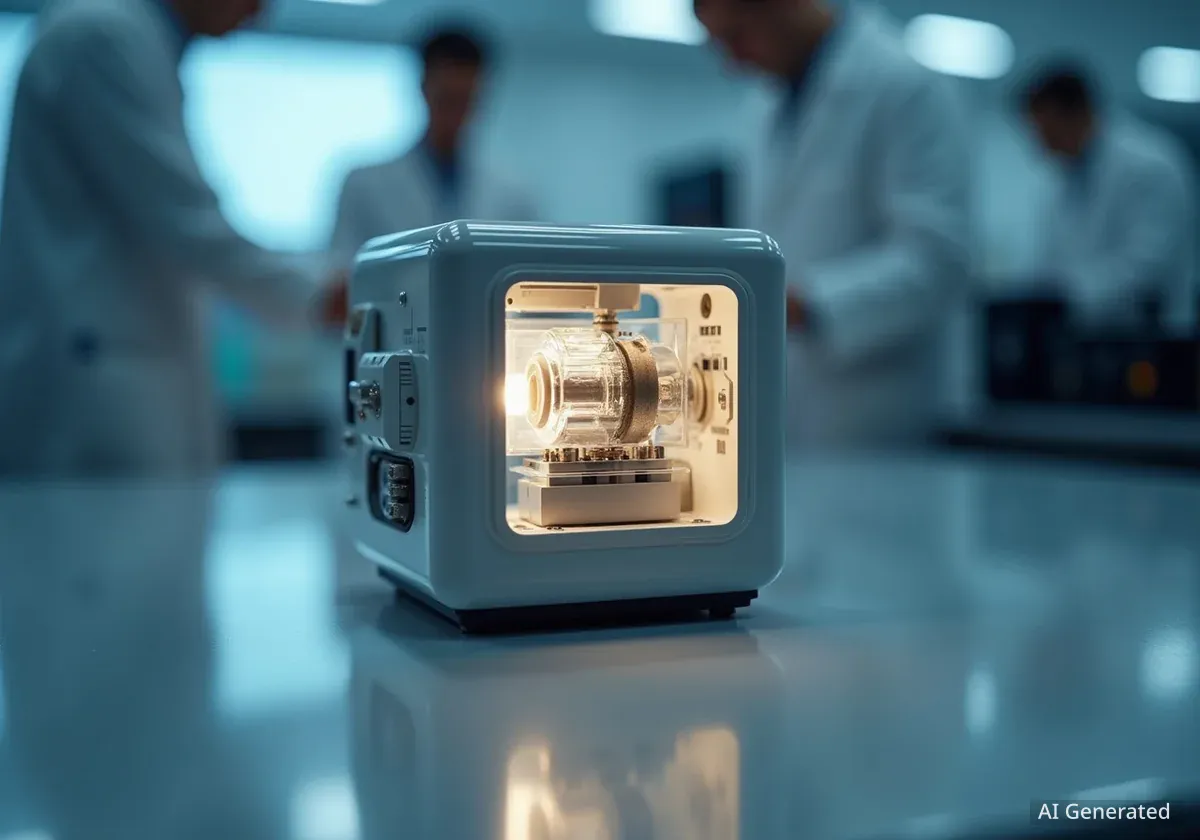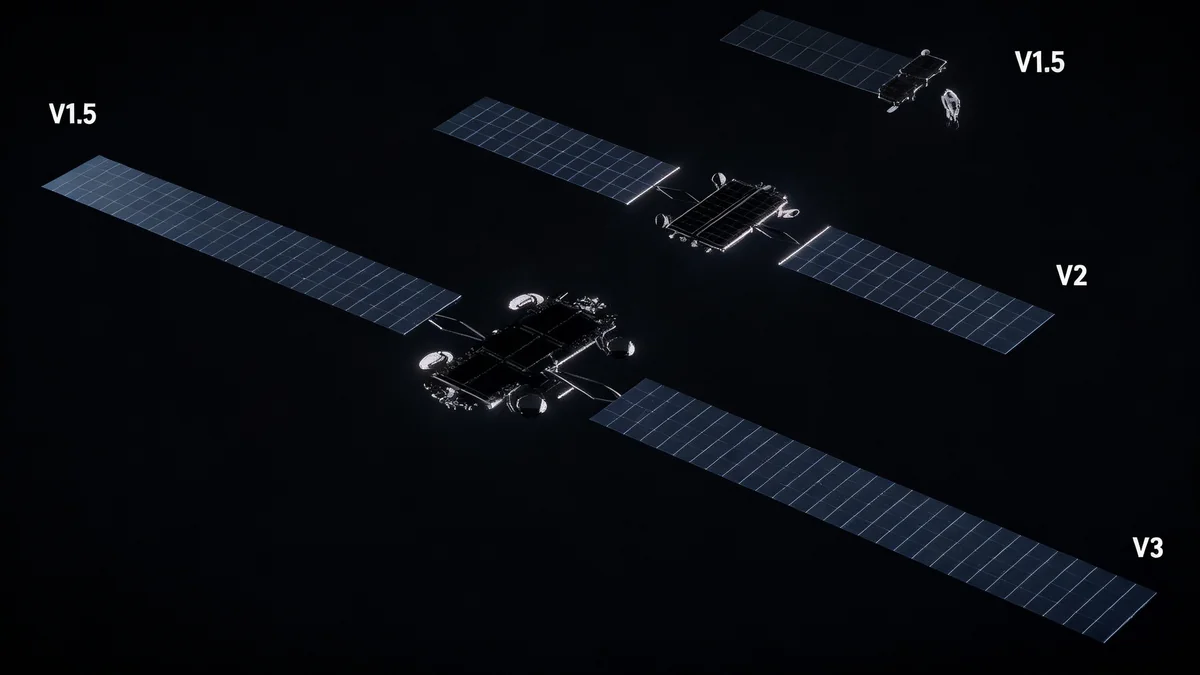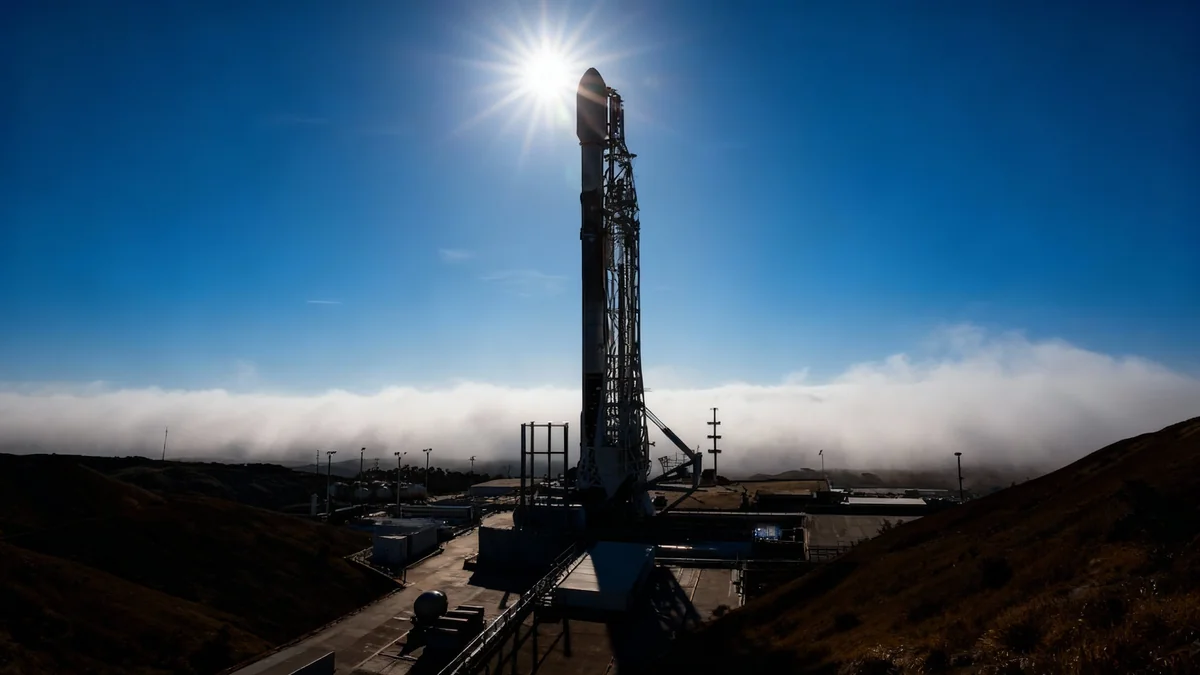Scientists have introduced new designs for space telescopes and their instruments, aiming to improve the search for Earth-like planets. A recent paper outlines two key innovations: a method for assembling large telescope mirrors in space using fluid dynamics and a versatile spectrograph for the upcoming Habitable Worlds Observatory. These technologies are intended to overcome current physical limitations and enhance our ability to analyze the atmospheres of distant worlds.
The research, submitted for publication, presents a conceptual framework for fluidic shaping to create telescope mirrors far larger than what can be launched from Earth. It also details a dual-configuration spectrograph designed to detect key biosignatures, such as oxygen, in the atmospheres of exoplanets orbiting nearby stars.
Key Takeaways
- Researchers propose building large telescope mirrors in space using a technique called "fluidic shaping."
- This method could enable primary mirrors measuring tens of meters in diameter, significantly larger than current space telescopes.
- A new dual-configuration spectrograph concept has been designed for the future Habitable Worlds Observatory (HWO).
- The spectrograph can switch between low and high-resolution modes to detect atmospheric gases like oxygen and perform detailed characterization of exoplanets.
Overcoming Launch Constraints with In-Space Assembly
The size of a telescope's primary mirror directly impacts its light-gathering ability, which is crucial for observing faint, distant objects like exoplanets. Currently, space telescopes are limited by the size of the rocket fairings used to launch them into orbit. The James Webb Space Telescope, with its 6.5-meter segmented mirror, represents the peak of current launchable technology.
To bypass this fundamental constraint, researchers are exploring in-space assembly. The new paper, authored by a team including Enrico Biancalani and Ruslan Belikov, focuses on fluidic shaping. This innovative technique involves forming the precise, curved surface of a mirror in the microgravity environment of space using liquids.
What is Fluidic Shaping?
Fluidic shaping is a scale-invariant technology that uses the physical properties of liquids in microgravity to create smooth, optically precise surfaces. By manipulating fluids, scientists believe they can form large, uniform reflector dishes without the need for complex mechanical folding and deployment systems like the one used for the James Webb Space Telescope.
This approach could pave the way for telescopes with apertures measuring many tens of meters. Such an increase in size would represent a monumental leap in observational power, allowing astronomers to collect more light from exoplanets and study them in unprecedented detail.
A Roadmap for Fluidic Telescopes
The conceptual framework presents three potential design paths for future telescopes focused on studying exo-Earths:
- A primarily fluidic pathway, which leads to a new type of optical design known as a post-prime-focus architecture.
- A legacy pathway that builds upon the established, segmented-mirror design of the James Webb Space Telescope.
- Hybrid solutions that combine elements of both fluidic and traditional manufacturing techniques.
To test the viability of the fluidic approach, the researchers have proposed a tentative optical design for a 1-meter technology demonstrator. This smaller pathfinder mission would serve as a proof-of-concept, validating the technology before scaling it up for more ambitious projects.
A New Spectrograph for the Habitable Worlds Observatory
The second major concept presented in the research is a novel instrument for the Habitable Worlds Observatory (HWO). HWO is a next-generation space telescope mission being planned by NASA, with the primary goal of directly imaging and characterizing Earth-like planets in our galactic neighborhood.
To achieve this, HWO will require highly advanced spectrographs capable of analyzing the faint light reflected from an exoplanet's atmosphere. The composition of this atmosphere can reveal clues about the planet's potential to support life. The new design proposes a compact, dual-configuration spectrograph tailored for this task.
Detecting Signs of Life
One of the most sought-after biosignatures is the presence of molecular oxygen (O2). On Earth, oxygen is abundant due to photosynthesis. Detecting a significant amount of O2 in an exoplanet's atmosphere, particularly the O2 A-band absorption feature around 760 nanometers, would be a compelling indicator of potential biological activity.
The proposed instrument features a slider mechanism that allows it to switch between two distinct operational modes without altering the rest of the optical path. This versatility is a key advantage for a mission like HWO, which will study a wide variety of planetary targets.
Two Modes for Comprehensive Analysis
The dual-configuration design provides astronomers with two essential tools in one compact package.
- Low-Resolution Mode: This mode operates with a spectral resolving power (R) of approximately 140. It is optimized for detecting the O2 A-band in the 600–1000 nm wavelength range. Simulations show this resolution is highly effective for initial detection of oxygen signatures.
- High-Resolution Mode: By swapping the dispersive element, the instrument can achieve a resolving power on the order of 1,000 (10³). This mode is designed for more detailed atmospheric characterization.
According to the research, higher values of R can be utilized with spectral cross-correlation matched-filter techniques to enhance HWO’s atmospheric characterization capabilities.
This high-resolution capability allows scientists to not only confirm the presence of certain gases but also study their abundance, temperature, and pressure within the atmosphere. This detailed information is critical for distinguishing between planets that are merely habitable and those that may actually be inhabited.
The Future of Exoplanet Exploration
The concepts of fluidic-shaping for telescope mirrors and dual-configuration spectrographs represent forward-thinking solutions to the challenges of exoplanet science. While still in the conceptual phase, these technologies offer a potential roadmap for the next generation of space observatories.
By enabling larger apertures, fluidic telescopes could gather the light needed to study smaller, rockier planets that are currently beyond our reach. Simultaneously, advanced instruments like the proposed HWO spectrograph will provide the analytical tools required to decipher the chemical makeup of their atmospheres.
The research, submitted to the HWO25 symposium proceedings, highlights the ongoing innovation in astronomical instrumentation. As technology continues to advance, the goal of finding and characterizing another Earth moves closer to becoming a reality.





